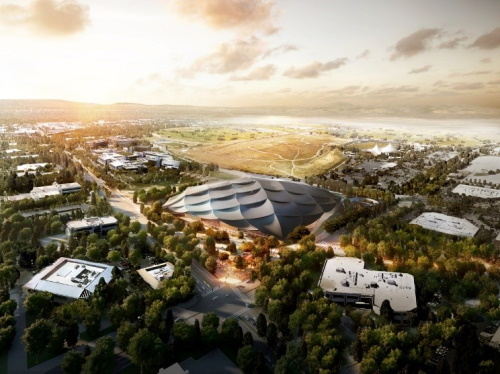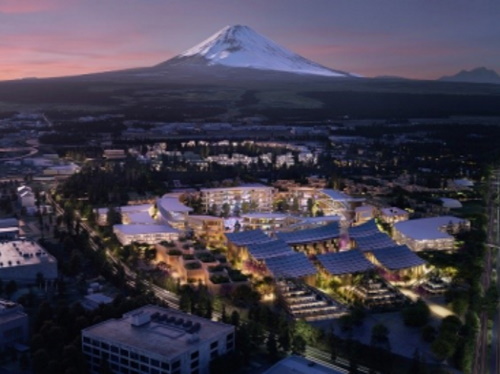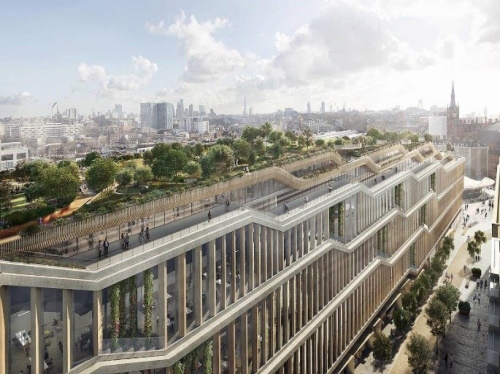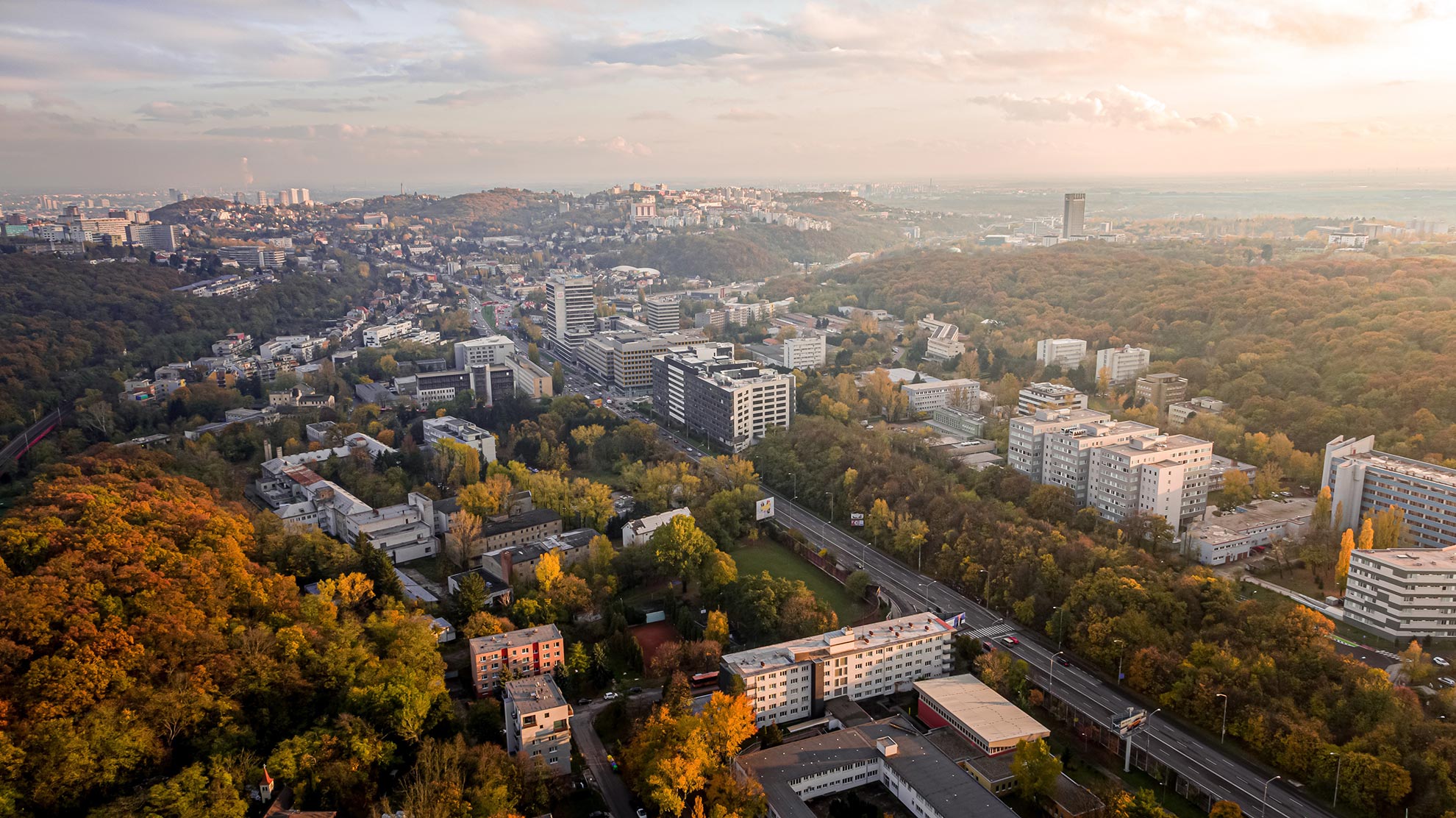ESET has named its partner in transforming the premises of the former Military Hospital at Patrónka into the Center for Innovation and Creativity – ESET Campus – the world-renowned architectural studio Bjarke Ingels Group (BIG). Architects from one of today’s most sought-after studios have won the international architectural competition that was announced by ESET last September. As ESET Campus is an exceptional project in terms of scope but especially the combination and interconnectedness of functions, the most important selection criteria were previous experience with a focus on master planning, campuses and innovation centers, but also sufficient studio size and capacity.
“We also see ESET Campus as an extremely complex project for our company, which is why we paid a lot of attention and time to the choice of the conceptual architect. The international competition and workshops with the addressed studios, as well as discussions with Slovak experts who helped us with the selection, significantly moved us not only in thinking about the future design of the project, but also on current topics such as sustainability, ecology and flexibility of the working environment. In addition, we are preparing this exceptional project at a time that posed completely new challenges for us, so I am very happy that we will develop it with exceptional architects from the BIG studio,” said Pavel Luka, ESET’s chief operating officer, about the results of the competition.
“We are honoured to work with ESET, which has set out an extraordinary level of ambition for their new headquarters. With the global events of 2020 and the rise of remote working in mind, this has become an opportunity to explore the future of both physical and virtual work space, and to rethink the campus as an integrated part of the city. The vision is to demonstrate a true carbon neutral approach to construction, and to create a campus blended closely with the natural environment at the foot of the Small Carpathians,” said Andreas Klok Pedersen, partner, BIG London.
As the intention of the competition was the presentation of conceptual proposals and the selection of a long-term partner for cooperation, the result of the selection is not yet the final design of the project. It should be created in the coming months in cooperation with the BIG studio, ESET and also with the involvement of a local architectural studio, the selection of which is currently being prepared.
Based on the cooperation of ESET with the Faculty of Architecture and Design of the Slovak Technical University (FAD STU) in Bratislava, the architects from the BIG studio also became the guarantors of the newly opened 25th vertical studio at FAD STU. In the next school year, under their leadership, students will solve assignments related to the topic of innovation centers, science parks, and sustainability, but also design solutions in the post-COVID-19 era.
ABOUT THE ESET CAMPUS PROJECT
ESET acquired the plot of land at the Bratislava Patrónka site in 2017. It plans to create an ESET Campus on the site of the former Military Hospital — a living place that will turn this part of the city into an epicenter of innovation and creativity in Bratislava. In addition to the new headquarters and global research center of ESET, the campus will create a unique and stimulating environment for IT and technology companies and startups, and connect them with technically oriented universities.
In addition to a high-quality environment for innovation and research, the campus will provide a wide range of other useful services and facilities, unique public spaces and, in part, a residential function intended mainly for company employees. The campus is also envisioned to create modern forms of accommodation for students, which can deepen the integration of universities within this innovative ecosystem. An important part of the campus will be its sports infrastructure and auditorium; many of these spaces will also be available to the general public.
The campus will be built on the principles of functionality, sustainability and ecology. It is intended to support the use of public transport and maximum comfort for pedestrians as much as possible. In addition to public transport stops, there is also a railway station in the immediate vicinity of the complex, thanks to which train transport in this part of the city could become a full-fledged part of public transport.
BIG – BJARKE INGELS GROUP
BIG is a Copenhagen, New York, London and Barcelona based group of architects, designers, urbanists, landscape professionals, interior and product designers, researchers and inventors. The office is currently involved in a large number of projects throughout Europe, North America, Asia and the Middle East. BIG’s architecture emerges out of a careful analysis of how contemporary life constantly evolves and changes, not least due to the influence from multicultural exchange, global economic flows and communication technologies that all together require new ways of architectural and urban organization. More info: big.dk.
Google headquarters, USA. With Google and parent company Alphabet’s ever-expanding and ever-evolving ventures, occupying existing buildings for the expanding workforce has reached its organizational limitations – teams become spread across multiple buildings, separated by parking lots. On the other hand, a single centralized headquarters is also not the approach for Google, nor is it desirable for the city of Mountain View. Our mission is to create a replicable and scalable building typology that is also adaptable and inclusive to the various sites of North Bayshore and beyond. More info: big.dk/press/gce/

Together with Toyota Motor Corporation, BIG unveils Toyota Woven City as the world’s first urban incubator dedicated to the advancement of all aspects of mobility at the foothills of Mt. Fuji in Japan. Envisioned as a living laboratory to test and advance mobility, autonomy, connectivity, hydrogen-powered infrastructure and industry collaboration. More info: big.dk/press/twc

Google London headquarter, UK. Centrally located in King’s Cross and adjacent to the city’s largest station, Google’s London headquarters will be its first wholly owned and designed building outside the United States. The new 11-storey building, combined with Google’s current building at 6 Pancras Square and an additional third building, will create a King’s Cross Campus with the potential to house 7,000 Google employees. Comprising of more than 1 million sqft, of which Google will occupy 650,000 sqft, the purpose-built building is being developed from the ground up and will contribute to the Knowledge Quarter and King’s Cross’s growing knowledge-based economy. More info: big.dk/press/kgx







Share Article